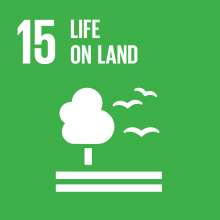Northern Corroboree Frog Recovery Program
The Northern Corroboree Frog is listed as endangered in the ACT, NSW and nationally. The decline of Corroboree Frogs has been attributed to disease caused by the introduced Amphibian Chytrid (pronounced 'Kit-rid') Fungus, which has also caused declines and in some cases extinctions of frogs worldwide. Climate change, environmental stochasticity (drought, wild fires) and damage to habitat by introduced animals (degradation of breeding by pigs, deer and horses) have also contributed to the decline of corroboree frogs in some areas.
As part of the National Recovery Program for the Corroboree Frog and the ACT Action Plan for the Northern Corroboree Frog, the ACT Government established a conservation breeding program for Northern Corroboree Frogs at Tidbinbilla Nature Reserve from eggs collected in the wild. The species has been successfully bred in captivity at Tidbinbilla since 2008. The program maintains an insurance population of ~ 800 individuals to conserve important genetic diversity. Annually, individuals surplus to the insurance population are released into the wild.
A key aim of the ACT Government recovery program for Northern Corroboree Frogs is to release captive-bred frogs back to sphagnum moss bogs in Namadgi National Park where ecologists hope they will breed and develop natural disease resistance to Amphibian Chytrid Fungus. In 2015, some of the young frogs released in 2011 were heard calling in the bogs, confirming that young captive-bred individuals can survive and grow for several years in the wild to reach breeding age.
The ACT government is committed to innovative initiatives to improve reintroduction success of NCF. One approach is to raise and breed Northern Corroboree Frogs in conditions that more closely resemble what the frogs experience in the wild using specially designed outdoor tanks. Outdoor breeding was first trialled in 2018 with successful recruitment of young occurring. Moving forward, the recovery program will be trialling new approaches to establishing self-sustaining populations in the wild.



